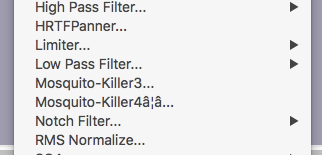If it is USB in origin then it will be 1kHz. A 1 mS polling period is written into the standard. However it probably isn’t an particularly accurate 1 kHz as that would be subject to the accuracy of clock source for the buss master, and there probably is a fair bit of AM & FM modulation on any sample, so you can’t make your notches too narrow, but there might be some gain if you can tune to the particular source.
The way the buss works is every 1 mS the master wakes up and polls all of the slaves for any data that they have to send or receive. In the typical case where the USB sound device has the bus to itself this results in a ~125 uS burst of data every 1mS. (Or two such bursts in rapid succession if the device is both recording and playing).
There are probably a myriad ways that the noise can get coupled into the microphone preamp. The data transmission is not quite truly differential, there is a buss state called “End of Packet” where both of the lines are pulled low at the same time, so there will be some common mode radiation from the data lines. Also the power consumed by the driving the buss will cause the power rail to sag and the ground rail to rise.


